Living City, Living Sea
Fagerstrand (NO) - Winner

TEAM DATA
Associates: John Sanden (NO), Ingvild Hodnekvam (NO), Mats Heggernæs (NO) – architects
Sanden+Hodnekvam Architects
Flaskebekkveien 103
0047 95063038
post@sandenhodnekvam.no / sandenhodnekvam.no
See the complete listing of portraits here
See the site here
TEAM PORTRAIT
VIDEO (by the team)
INTERVIEW
Click on the images to enlarge
1. How did you form the team for the competition?
Sanden + Hodnekvam Arkitekter is an established studio and Mats Heggernæs came to work in the studio a couple of years ago. Our office is located twenty minutes from the Fagerstrand competition area and we were excited to see that it was selected as one of the sites for Europan.
2. How do you define the main issue of your project, and how did you answer on this session main topic, Living cities?
The main issue for our project has been how to develop Fagerstrand in a way that brings new life to the area and at the same time preserve Fagerstrand’s natural qualities and rich industrial history. We wanted to find a healthy balance between urban development and value creation, at the same time as natural qualities are preserved and strengthened. All urban development must address the growing biological challenges on land and in the fjord. Our proposal suggests a new development where sustainable production and innovation co-exist with urbanity and preservation of natural resources. The main topic, Living cities, has informed our proposal on all levels. Firstly, we focus the urban development in parts of the site that have already been degraded by industry, in order to achieve area neutrality and preserve all existing habitats. Secondly, we propose to use vegetation and green corridors to provide high quality living spaces for all species. Vegetation is also used as a means to retain surface water, thus protecting the fjord from environmental toxins. We establish a green corridor for pedestrians and cyclists to connect the area, both as an attractive infrastructure and as a way of providing large coherent green areas to create good living conditions for flora and fauna. Thirdly, we propose to utilise new forms of industry and production as a means to create a productive city. With a particular focus on circular systems of food production, the fjord can actually benefit from aquaculture.
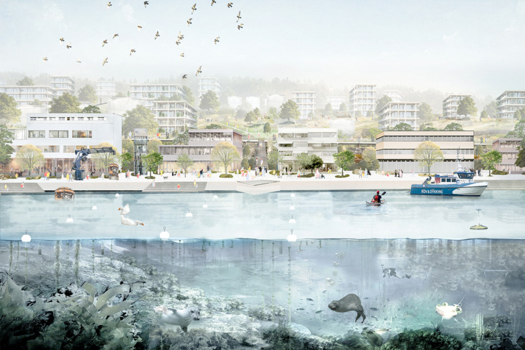
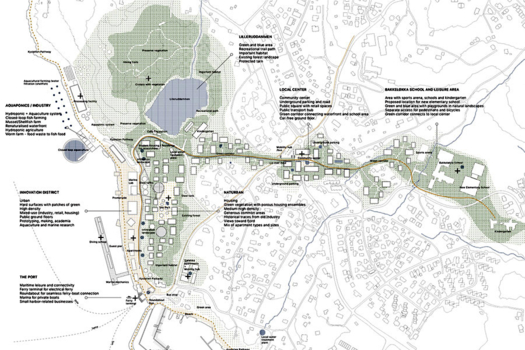
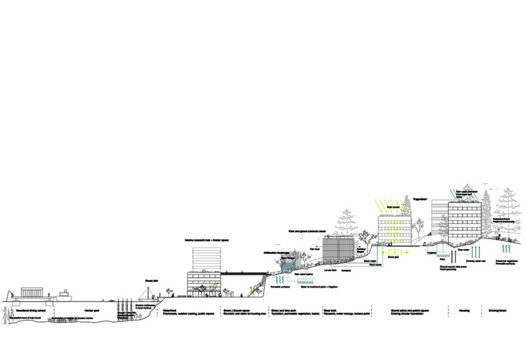
As mentioned in the previous question, we tried to seek strategic measures to use both the landscape, the industry and the topography to find solutions that could benefit Fagerstrand on several levels. We consider land and sea as one symbiotic system. We developed a concept where the interests of preservation of natural resources, measures to keep the fjord healthy and urban development could benefit each other. By preserving natural vegetation and inserting new urban structures within the green and industrial artefacts, we create new forms of dwelling, combining density/urbanity and natural qualities. Instead of erasing Fagerstrand’s identity, we see our proposal as part of a continuous development and in keeping with Fagerstrand’s identity. We try to use the energy and resources that is synonymous with urban development and industry to create a better place, combining the theme from the previous Europan, Productive cities and the current theme, Living cities.
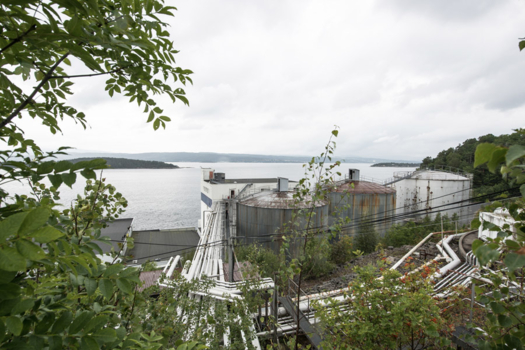
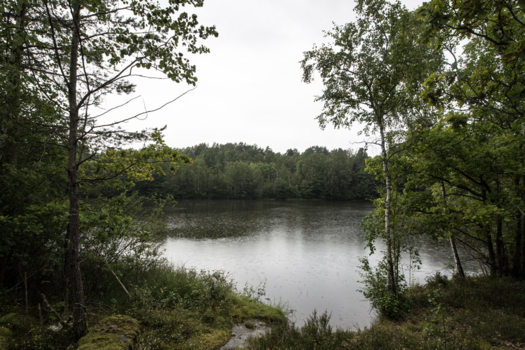
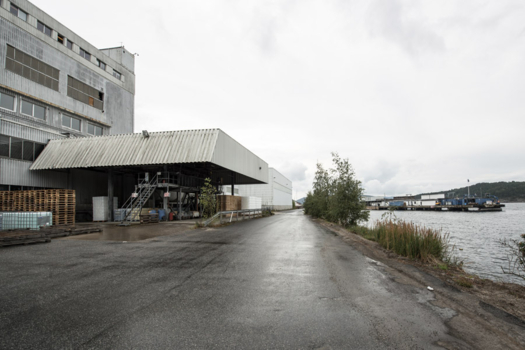
All architectural projects have to relate to an existing situation, so in that sense the proposal is a continuation of the work we do in the studio everyday – recognising existing qualities and look for ways to unlock the potential in each project. We are personally and professionally concerned with the environmental biological challenges we are facing, both locally and globally. This is an issue that we discuss in the studio whichever project we are working on. With emphasis on the theme of Living cities, we have done a few competition proposals dealing with similar ideas previously. What is special about Fagerstrand is the strategic location along the fjord and close to Oslo, where a sustainable development can really make a regional impact.
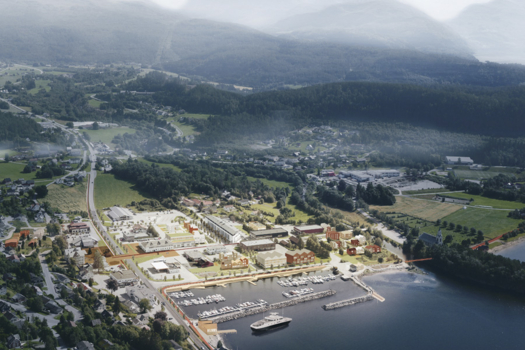
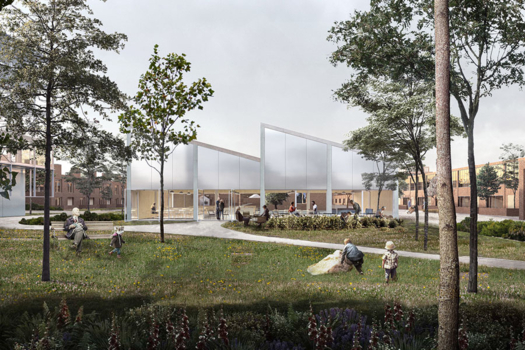
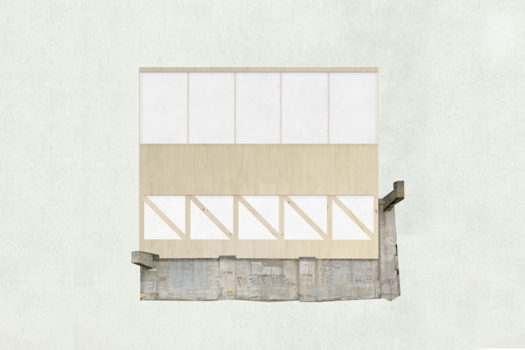
We see our proposal as a framework for urban development. We look forward to develop the project further in collaboration with land owners, residents, the municipality and potential industries/research groups that are all integral to Fagerstrand’s development.
6. Is it the first time you have been awarded a prize at Europan? How could this help you in your professional career?
It is our first time both entering and winning Europan. It is very exciting to have won the prize for an area we care for and see a lot of potential in. We have been working with the same issues in other projects and competitions and will continue our work with architecture in all scales.
TEAM IDENTITY
Office: Sanden+Hodnekvam Architects
Function: architecture
Average age of the associates: 34 years old
Has your team, together or separately, already conceived or implemented some projects and/or won any competition? if yes, which ones?
Yes. The office has conceived several projects, with particular emphasis on single-family houses. A selection of competitions:
- 1st prize. Student housing and office/workshop building, Gjøvik. Invited competition. 2021
- 1st prize. Visiting center and museum, Bryggen, Bergen. Invited competition. 2019
- 1st prize. Bergen Fish market. Bergen. Invited competition. 2019
- 1st prize. Masterplan, Bergen Harbour. Invited competition. 2019
- 1st prize. Children’s library installation, Nesodden. Invited competition 2019
- 1st prize. Gystadmarka masterplan. Open international competition. 2012
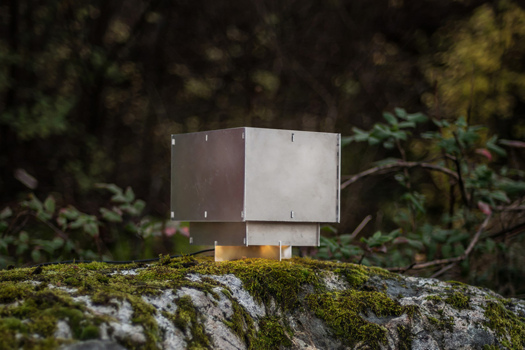
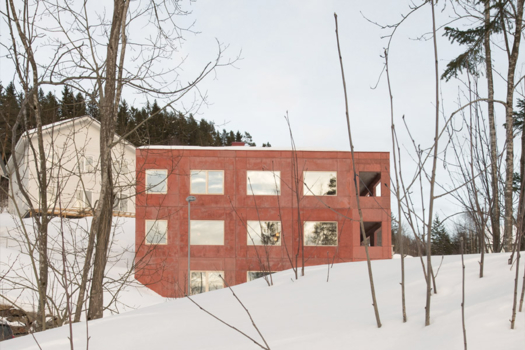
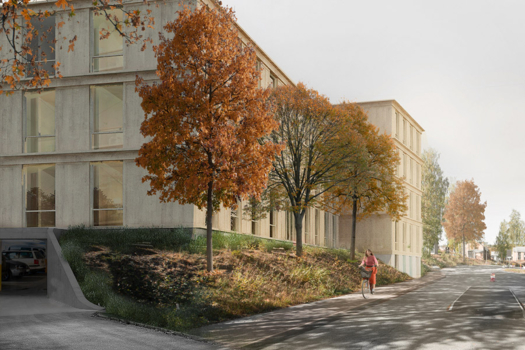
The team forms the architecture office Sanden+Hodnekvam and the office is located in an atelier at the Nesodden peninsula, overlooking the Oslo fjord.











